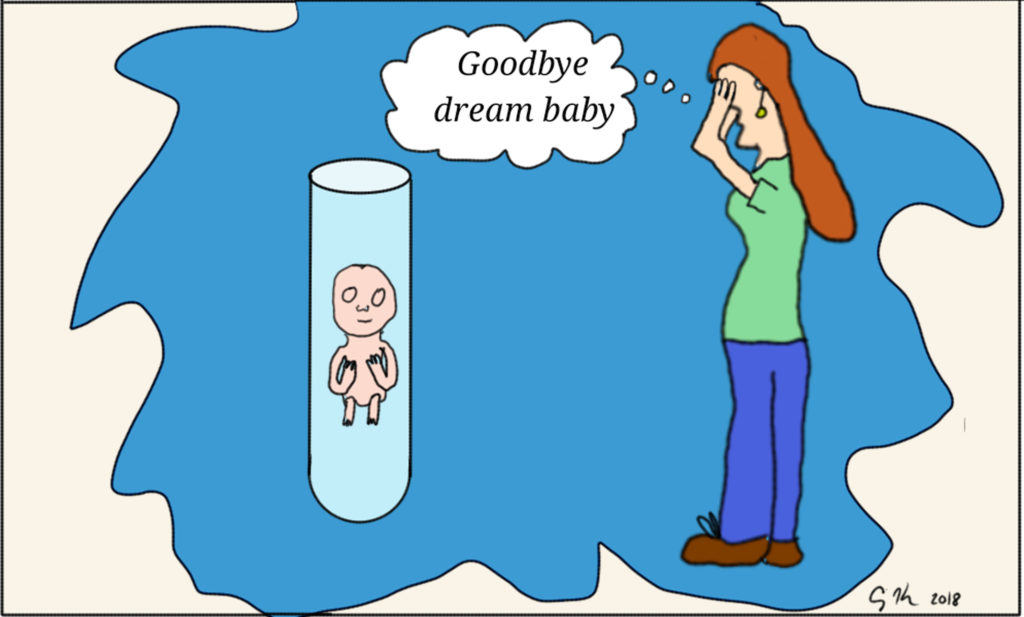by Craig Klugman, Ph.D.
Earlier this month, two fertility clinics reported problems with their cold storage equipment that led to the thawing and destruction of frozen embryos and eggs slated for people’s future reproductive options. At University Hospitals in Cleveland, approximately 4,000 gametes/embryos belonging to 950 couples were destroyed. At that facility, the storage tanks were being manually filled with liquid nitrogen and the temperature sensor that would have notified operators of warming was deactivated. Most if not all stored material has been lost. Meanwhile, in San Francisco, Pacific Fertility also experienced a storage tank malfunction that caused a low level of liquid nitrogen, affecting about 400 patients. The problem was identified and the materials were transferred and re-cooled. What is not known is whether any of the embryos and eggs are viable.

For some families, the loss means they need to go through expensive, invasive, and often painful additional rounds of IVF in order to produce more embryos if they wish to have children. For others, the sperm, eggs, and embryos were their last hope to have a genetic child. Several families are suing both clinics. In emotional news reports, people are quoted as saying their chance for a family has been lost; their future children have been destroyed. An interesting question arises as to what the lost “material” is. Are the gametes and embryos lost property or are they dead children.
Loss of Children
The people suing take the view that their future children have been killed. There may be no way for them to recover or recreate what has been destroyed. They view the frozen embryo, egg, or sperm as their “child.” Some tech companies have offered egg freezing as an option for woman who wish to spend their reproductive years building careers and might choose to have a child at an older age. Some couples froze their future progeny because impending cancer or other medical treatment would render them infertile. In other cases, the loss of the frozen future children might be the end of more than one life. Consider that some embryos might represent a needed savior sibling for a child who develops cancer and needs a genetic match for a cell or tissue transplant.
Beyond the notion of seeing embryos, eggs, and sperm as emotional and psychological “children,” there are a number of state laws and the U.S. Department of Health and Human Service draft plan which defines “life” as beginning at conception. While this would not effect frozen eggs and sperm, the implications of such policies is that the fertility centers might be charged with manslaughter or even child neglect.
However, a frozen egg, sperm, or embryo is not a guaranteed child but the material for a potential child. Consider that the success rate for IVF in a women under 35 years of age is 40% and for a women over 42 years, the rate is 4%. Chances of a live birth from a frozen egg are given at percentage of frozen eggs—if a woman is under 35 and freezes 10-20 eggs, than she has a 70-90% chance of 1 live birth. The perspective that the loss of the frozen material is a loss of a child is an emotional and existential perspective, but not a biological one. What is lost is the idea and the hope of having a child; a hope and idea that is not guaranteed.
Loss of Property
The other perspective is that the embryos, sperms, and eggs are property. In legal cases across the country, judges have offered opinions when a couple splits up and one person wants to control the embryos, or one person wants to be a parent and the other does not. Some courts have ruled in favor of the party who wants to become a parent and because of lost fertility the embryo is the last hope. Other courts have ruled in favor of the person who does not want to be a parent, saying that no one should be forced into that role (altogether or with their previous partner). The rulings have focused on the interests of the potential genetic parents rather than the status of the frozen embryo because the material is a what and not a who.
If they are indeed something that one owns, then it’s possible the clinics only offer the value of the lost services and materials. Freezing embryos and eggs for future fertility is not cheap. At Pacific Fertility, the cost of egg freezing is over $8,345 with the cost of in vitro fertilization at $11,595, and a simple insemination at $1,500. UH does not publicly list its prices. From an ethical standpoint, this is a tragic accident (though perhaps a foreseeably preventable one) for which the institutions would owe an apology and recompense.
That these individuals and couples experienced a real loss is beyond doubt. We must also ask what the likelihood is that an individual will use a frozen gamete or embryo? There are approximately one million embryos in storage in the United States. A retrospective records review showed that 39% of couples gestated their embryos—the rest kept them frozen them or donated them. Couples who received donated embryos were just as likely to keep them frozen as to use them. Embryos can also be donated for medical research and others are destroyed when no longer wanted or when storage fees are not paid. A UK review found that 93% of all embryos are never gestated; more embryos are destroyed than are every implanted. Thus, the loss experienced is mostly for the “possibility” of having a child, not for an actual future child.
Whether that loss is of a child, property, or an idea comes down to an argument of emotion, dreams, hopes, religion, and personal morality. Their mourning and pain are real even if statistically, most of the eggs and embryos would never have been used.